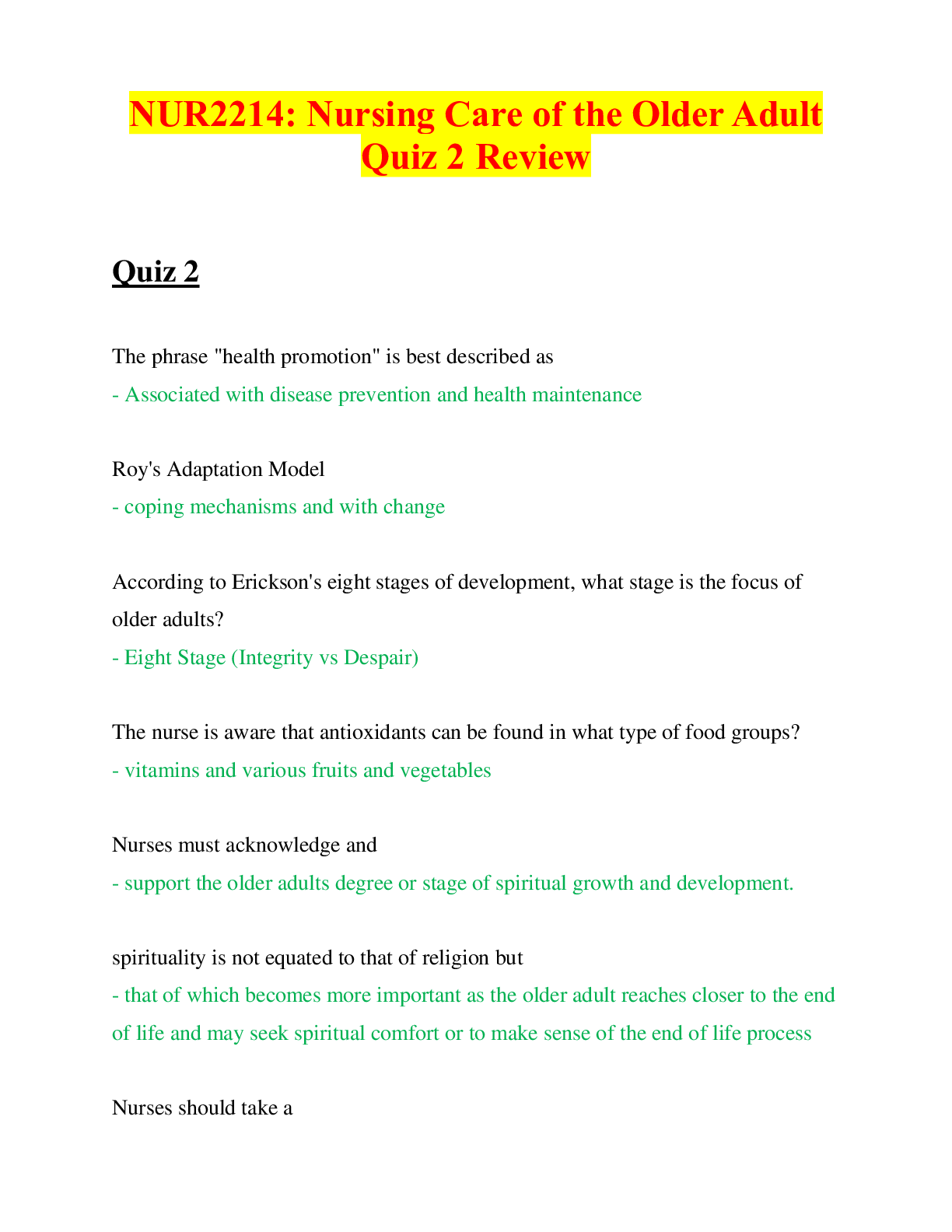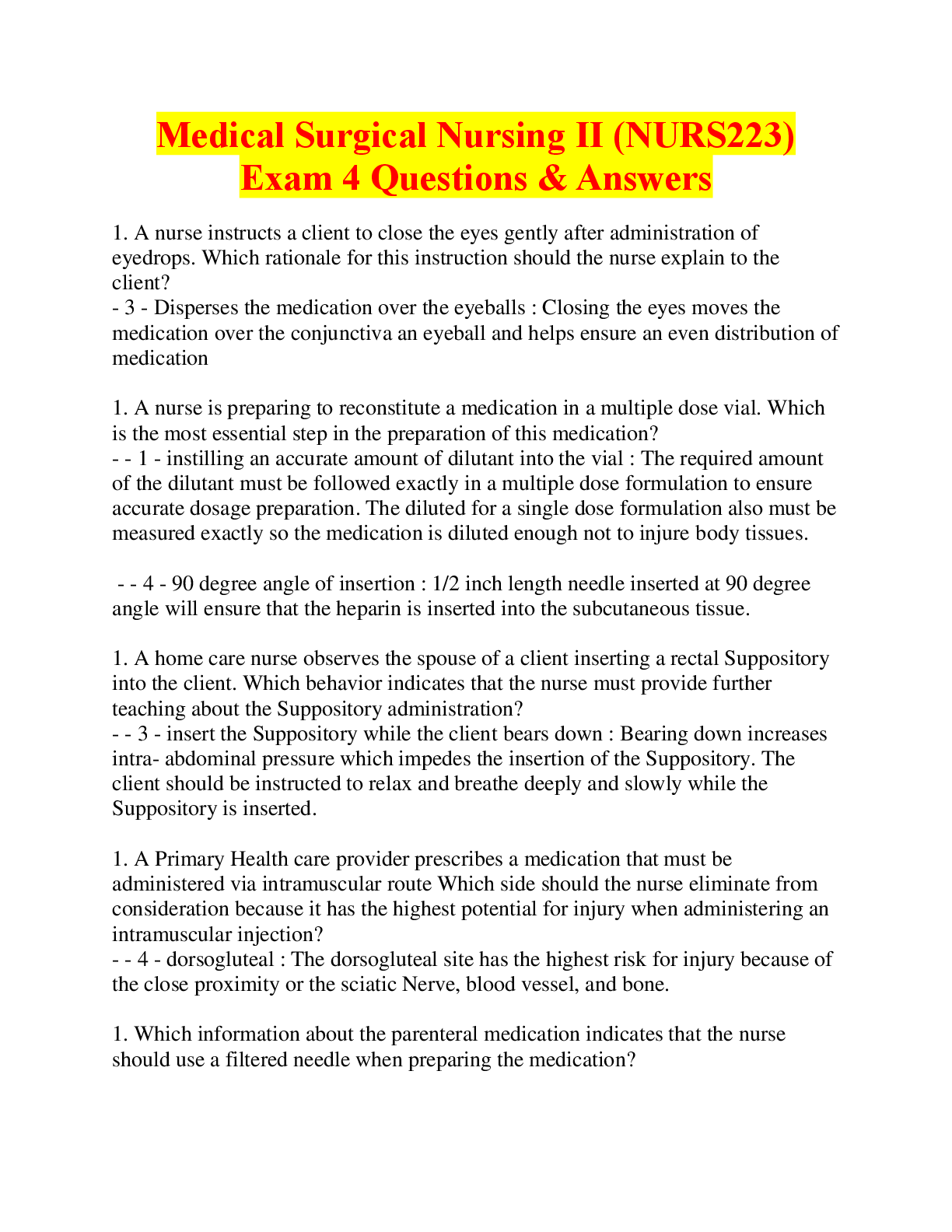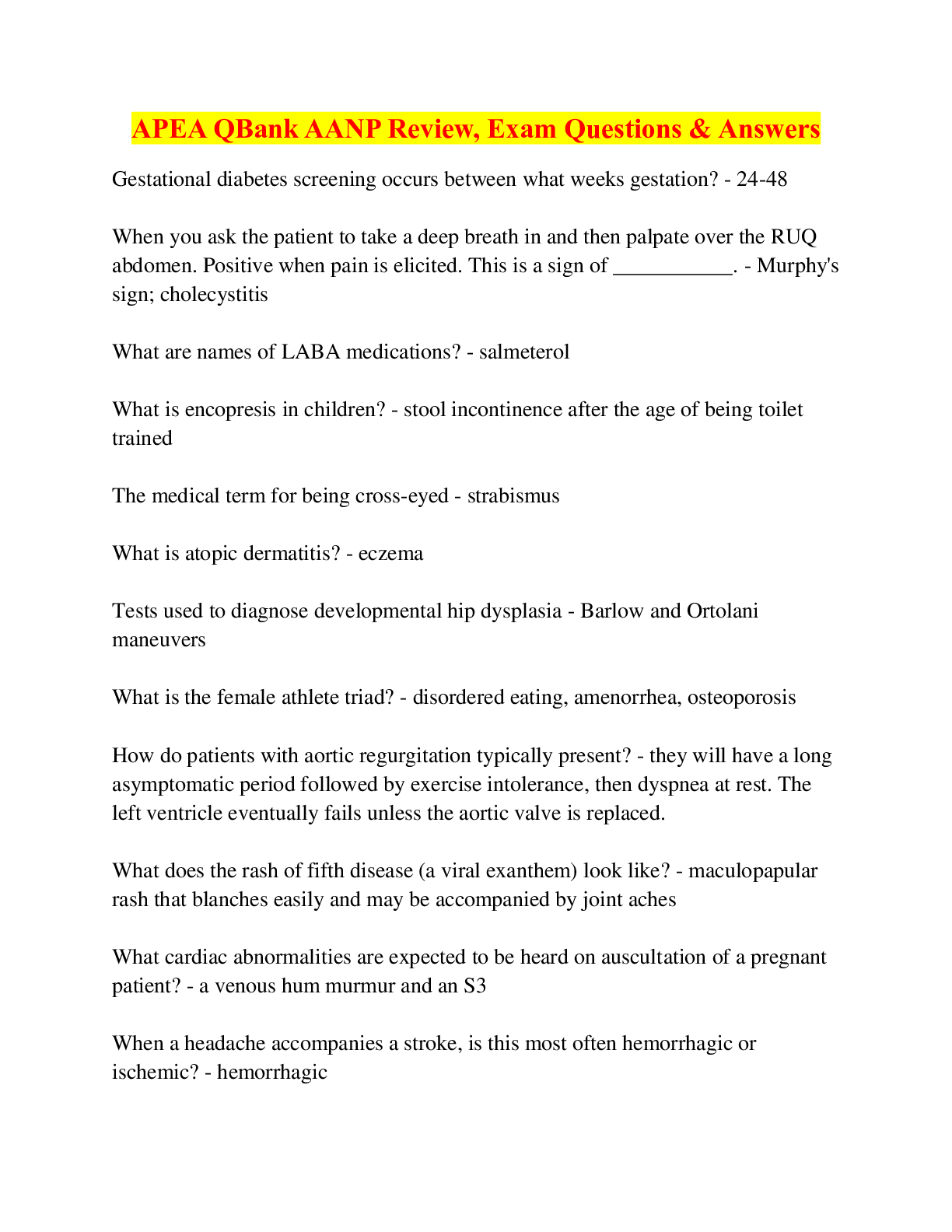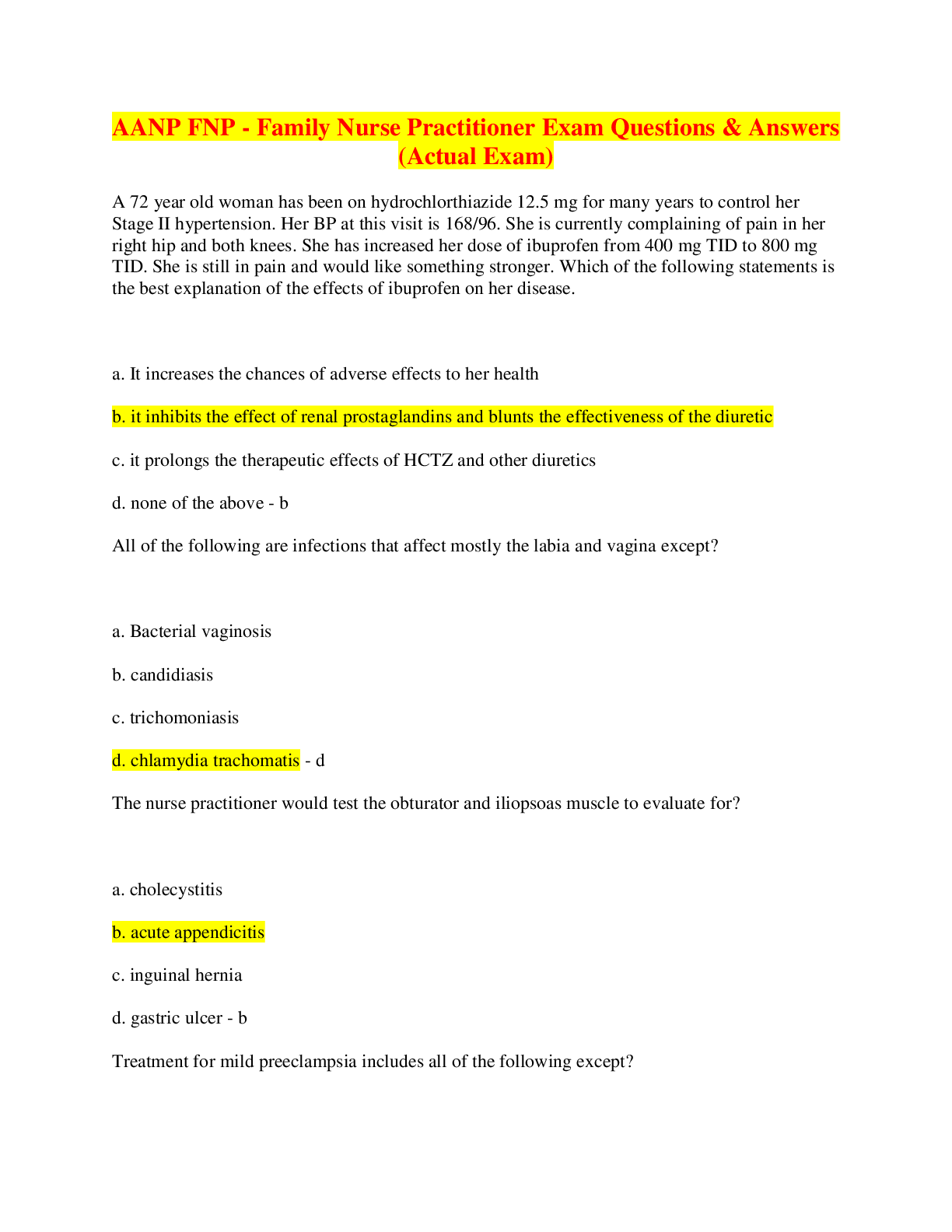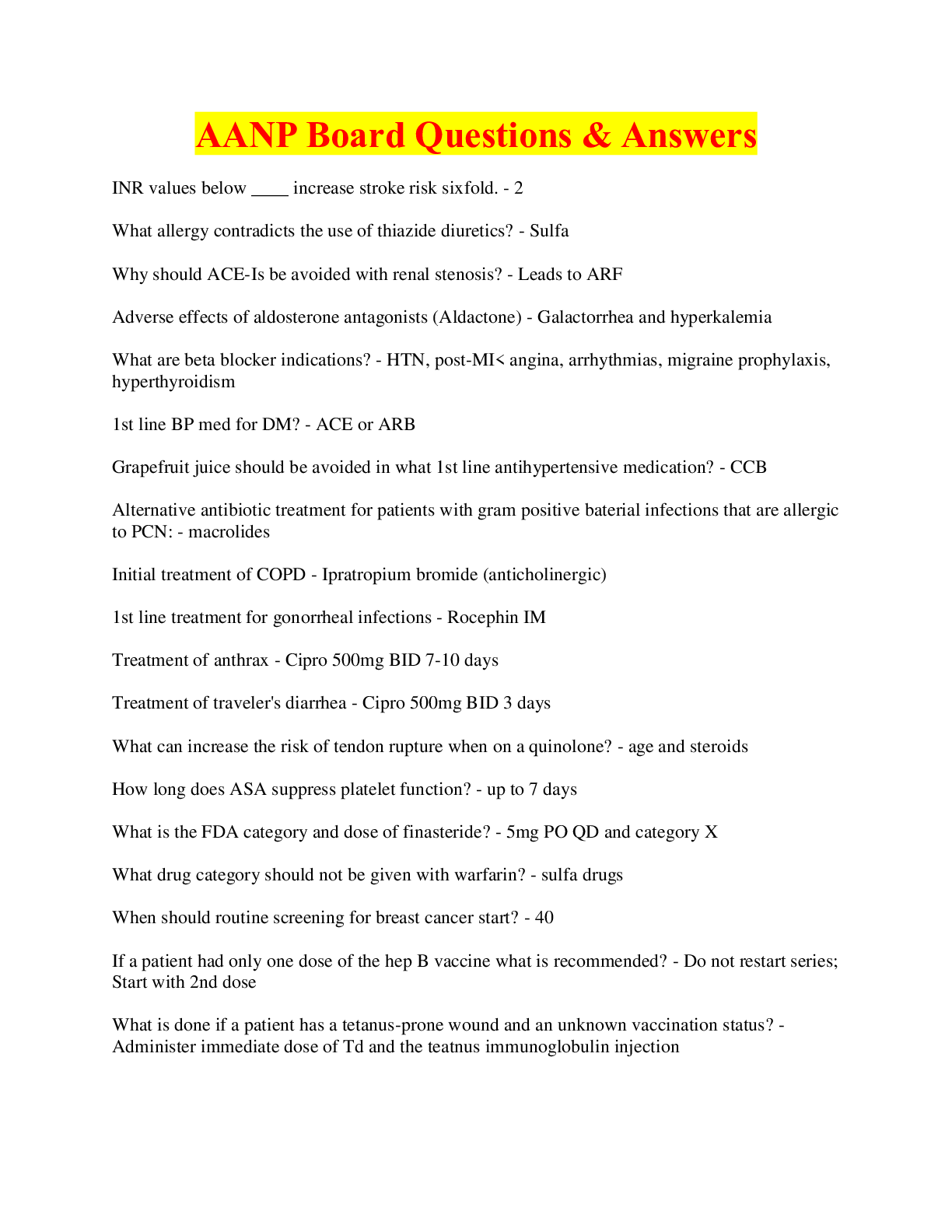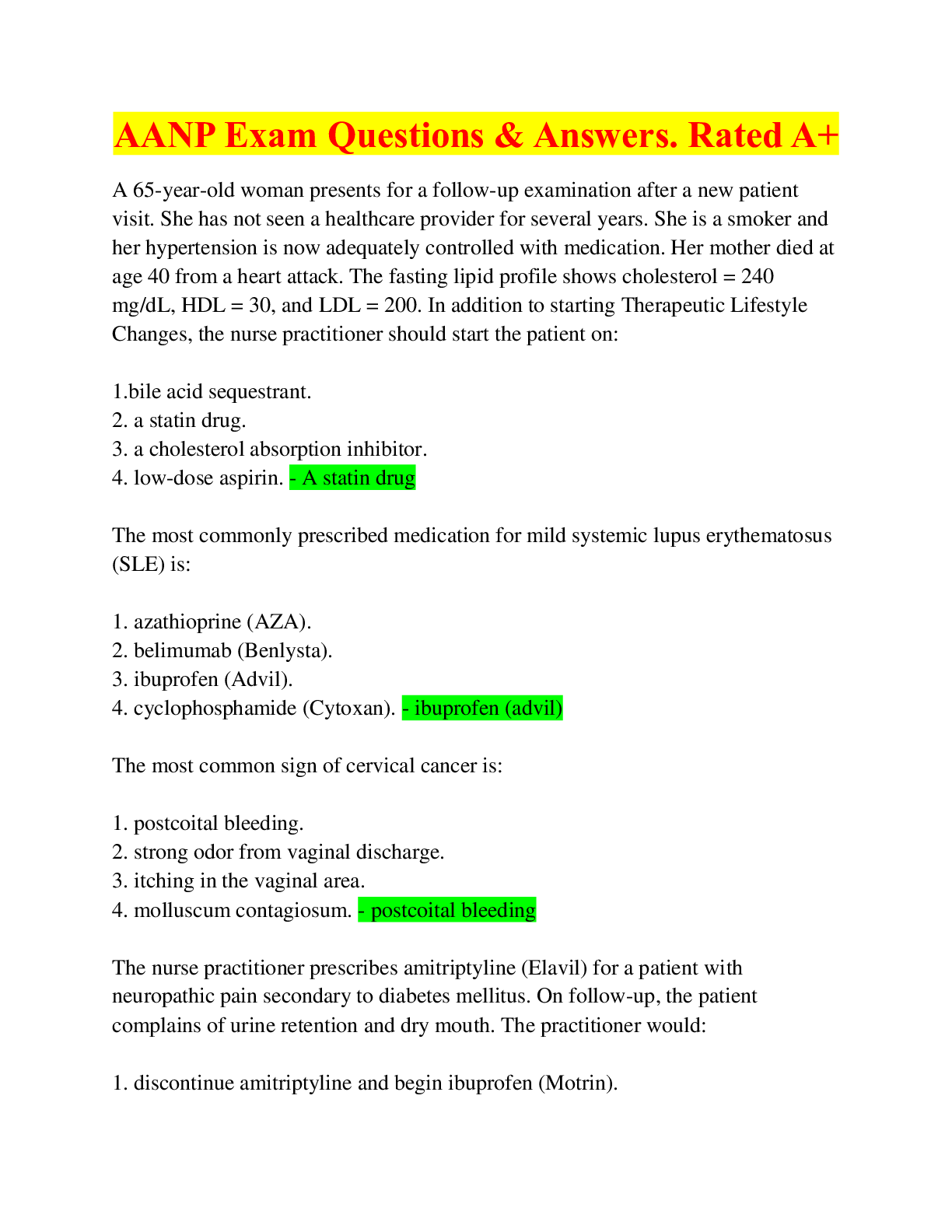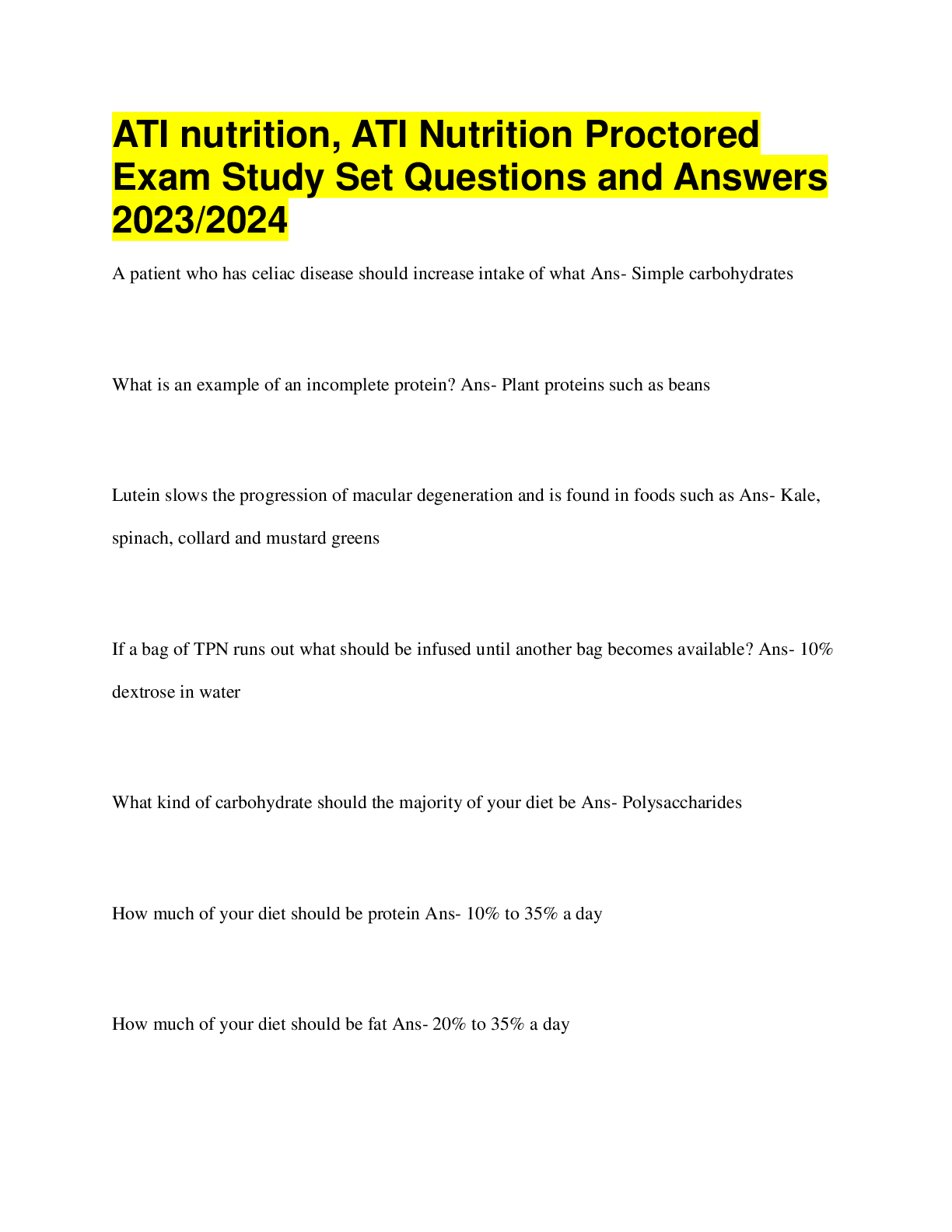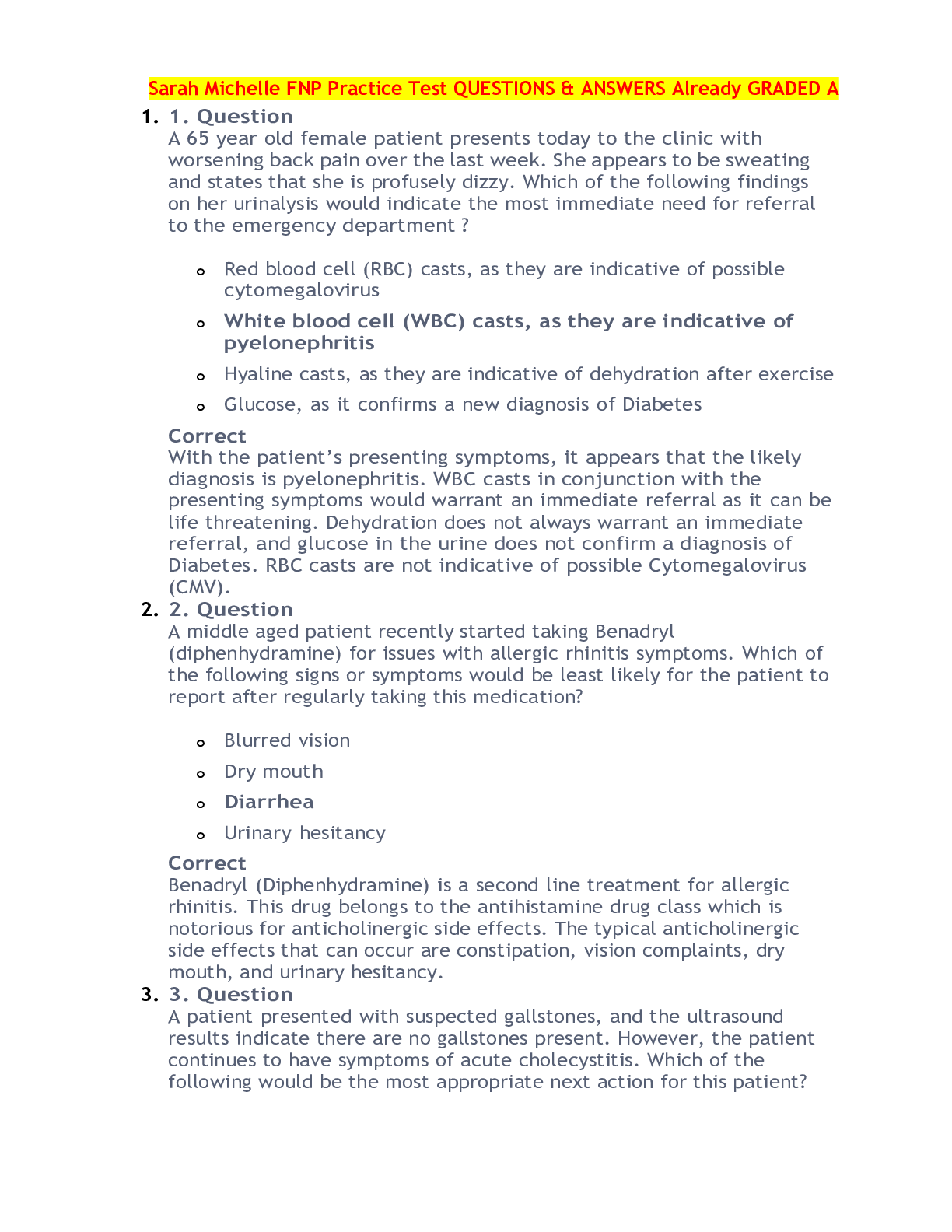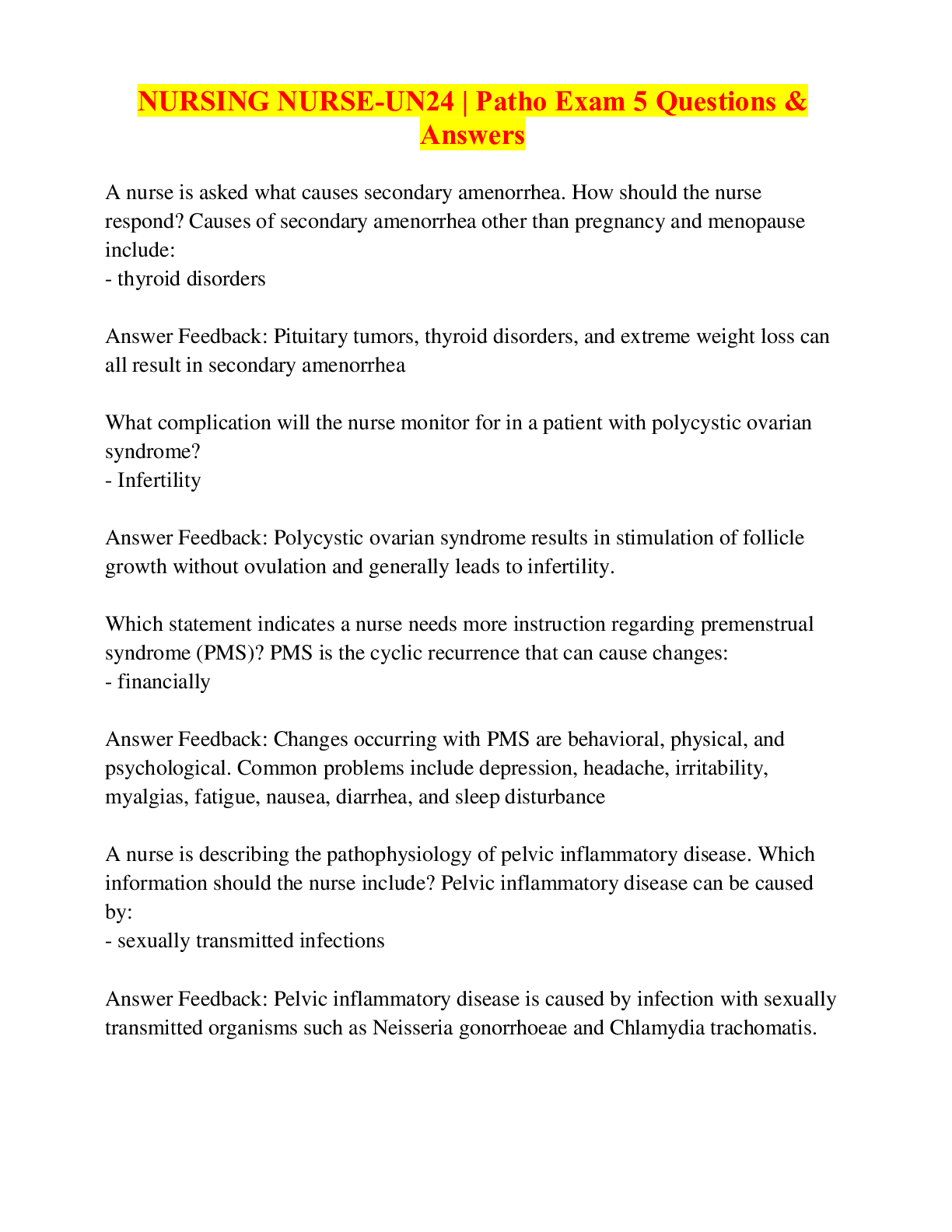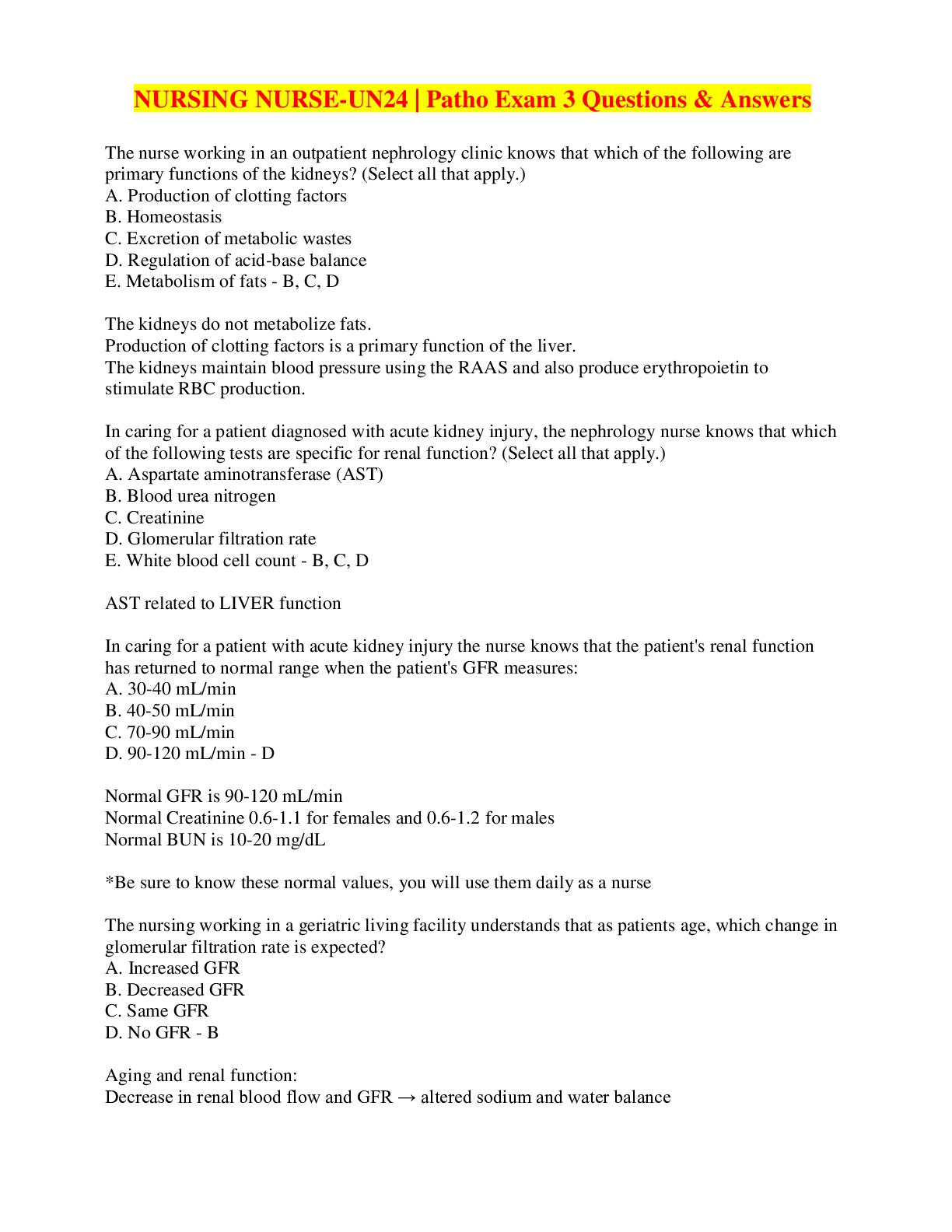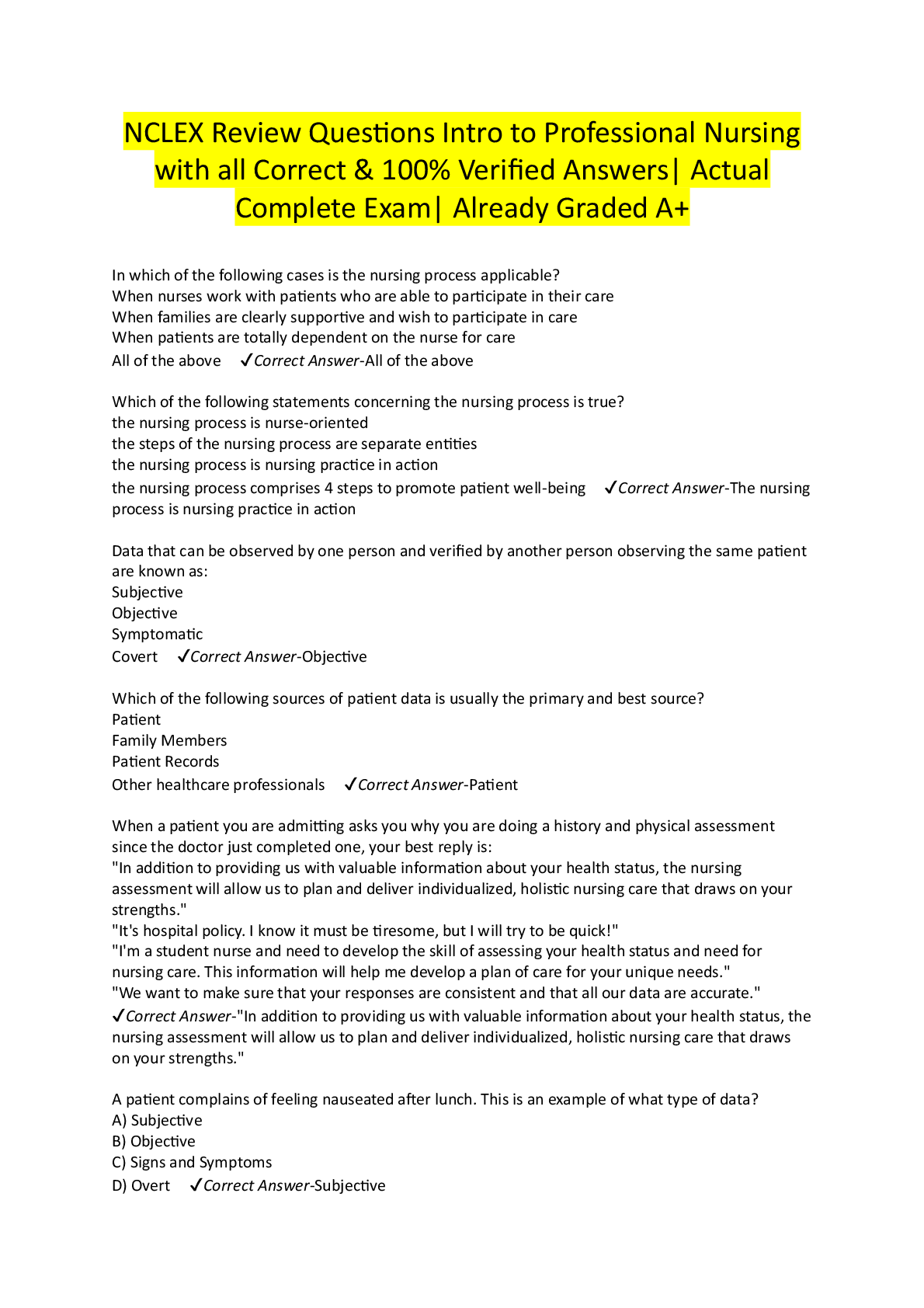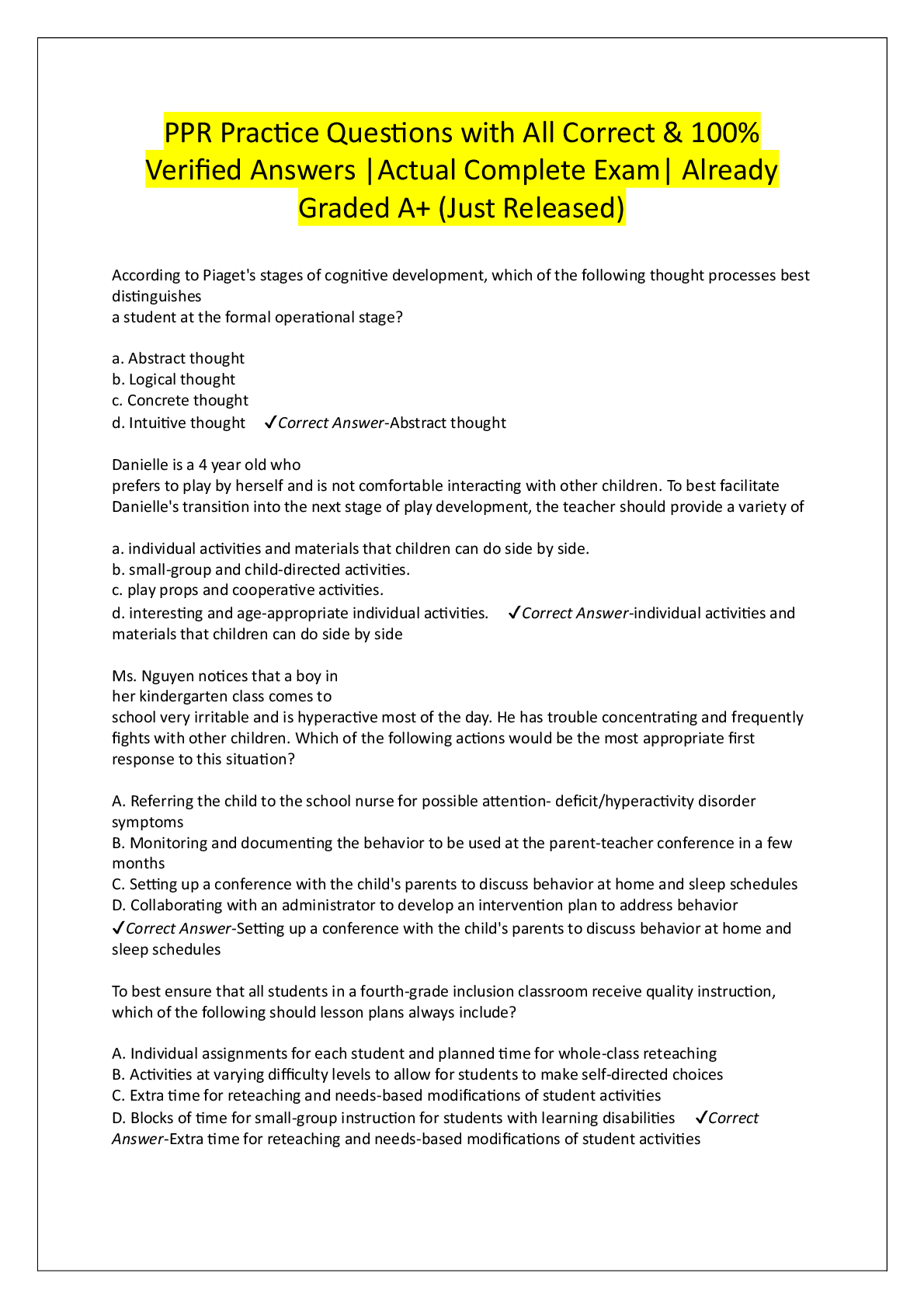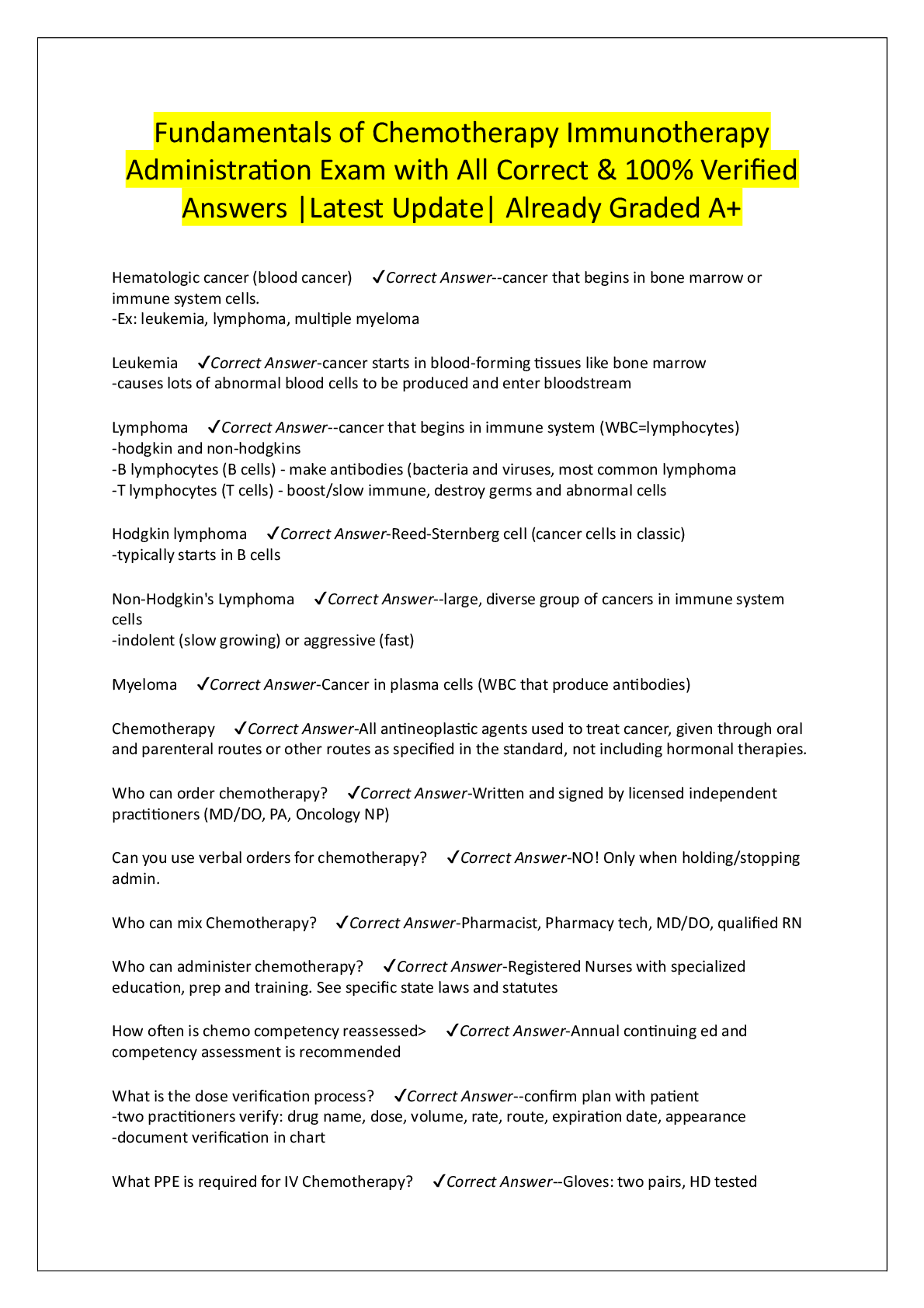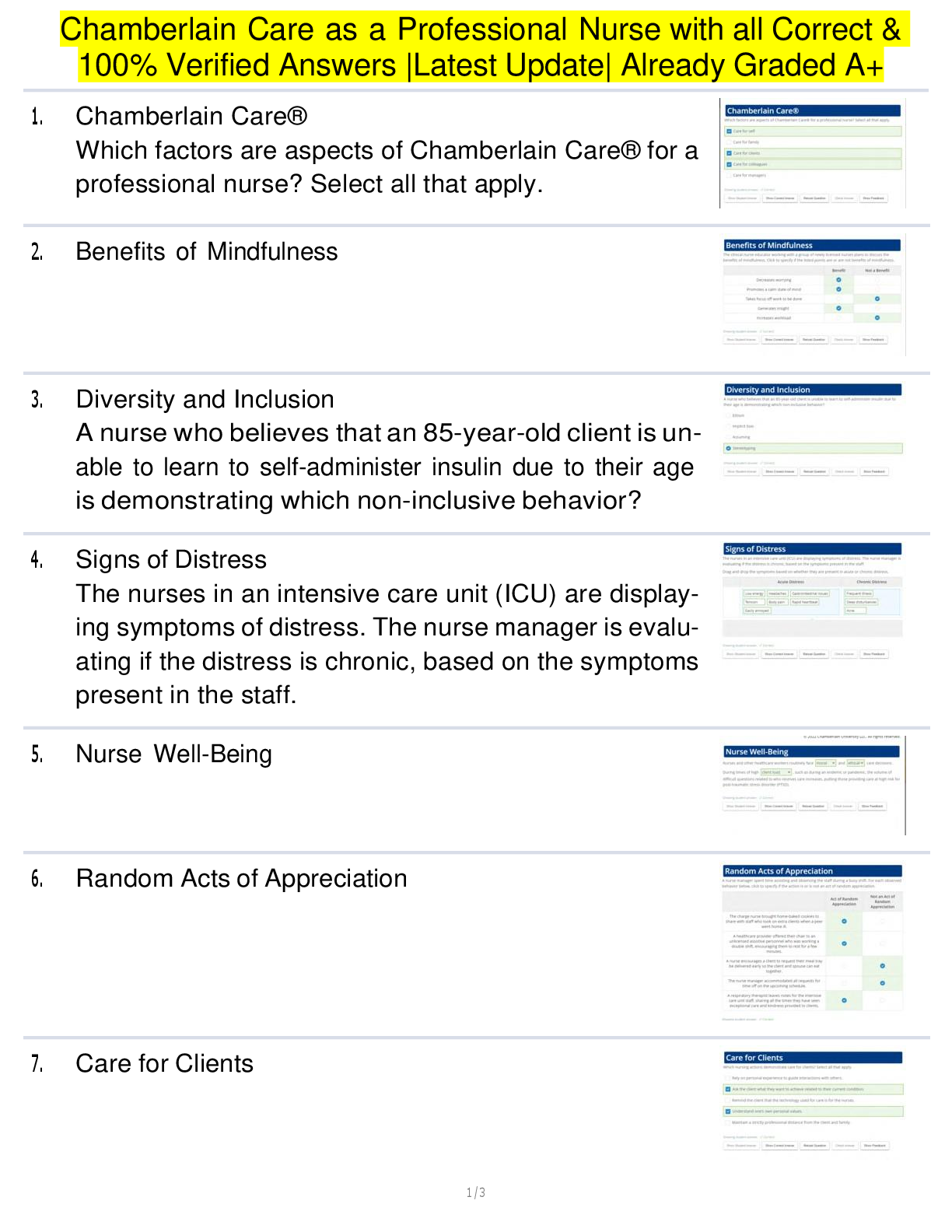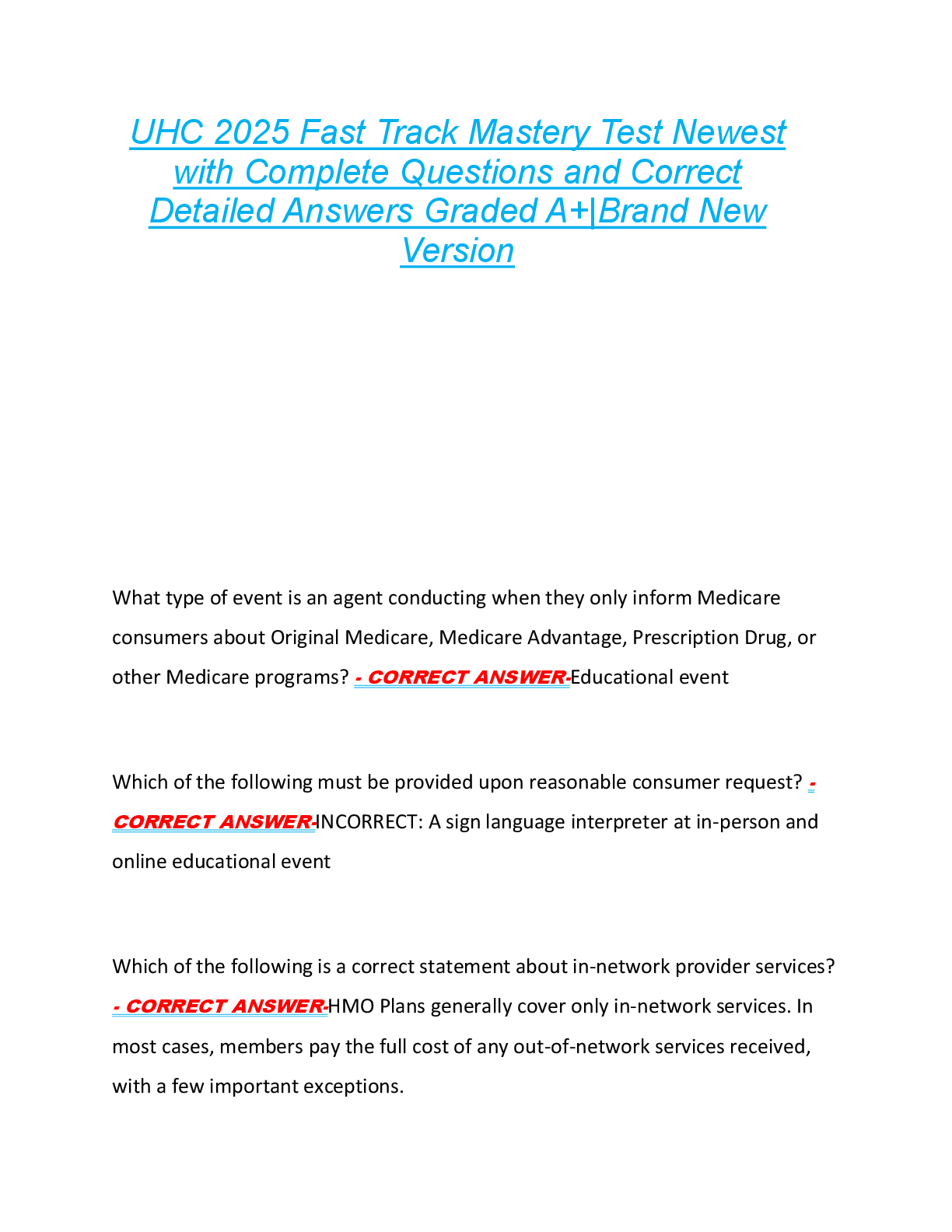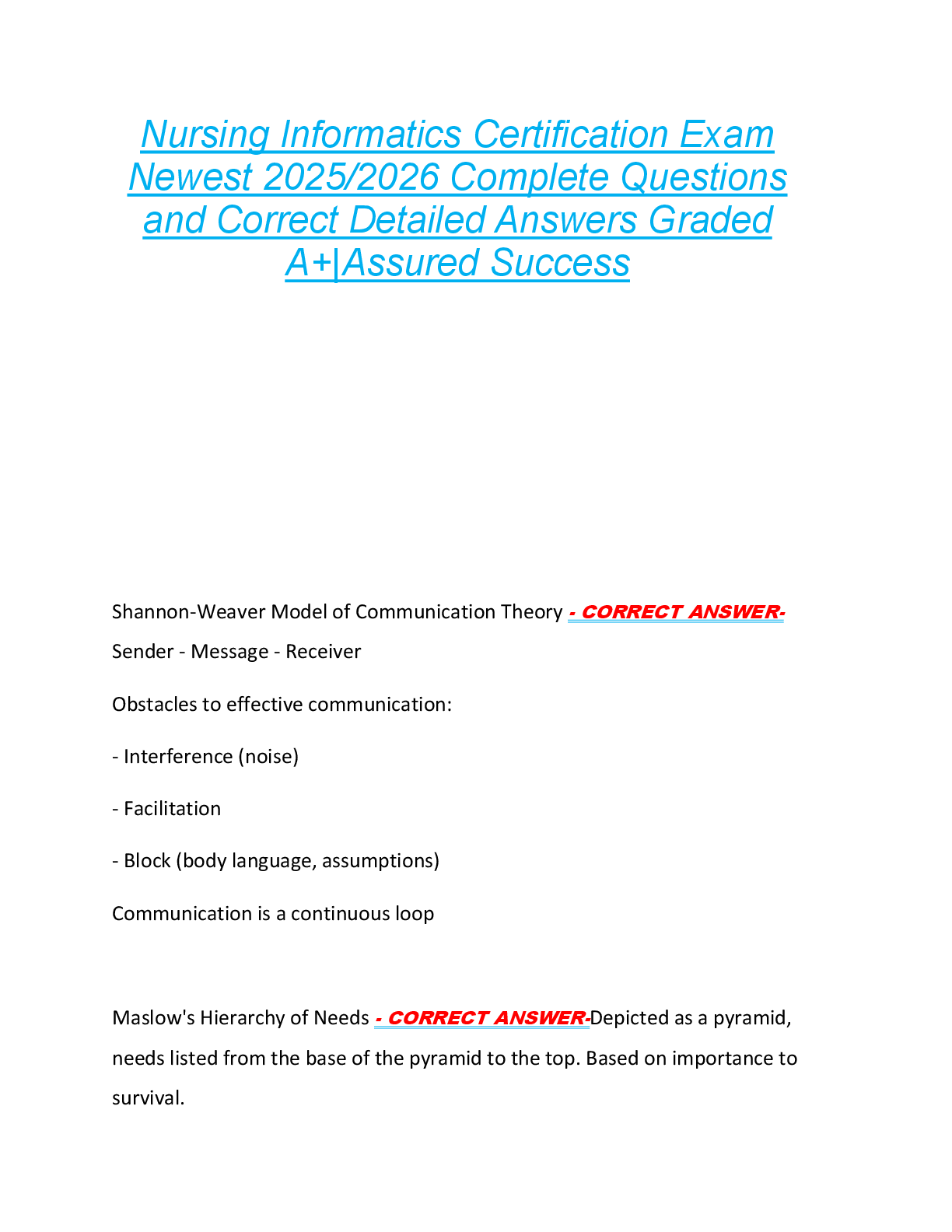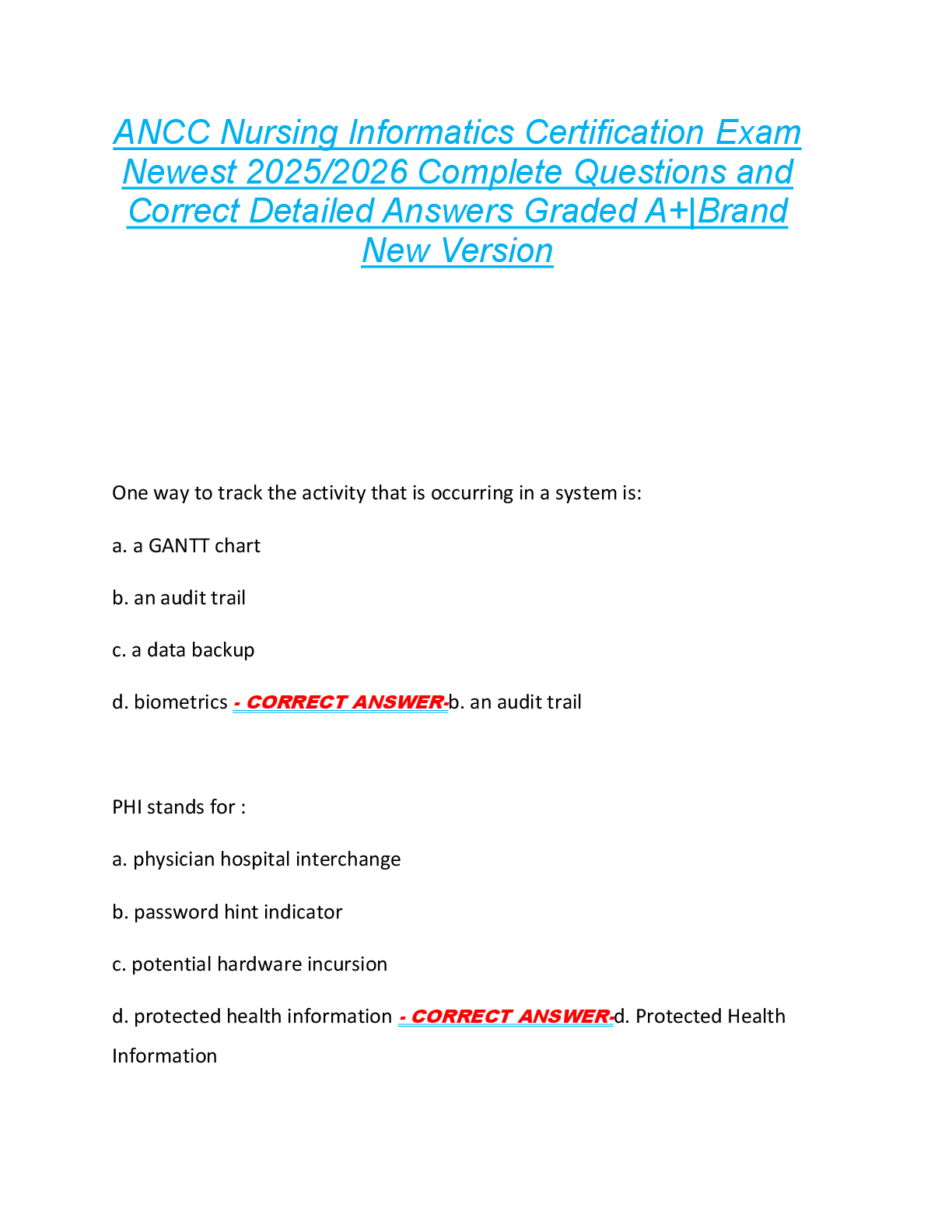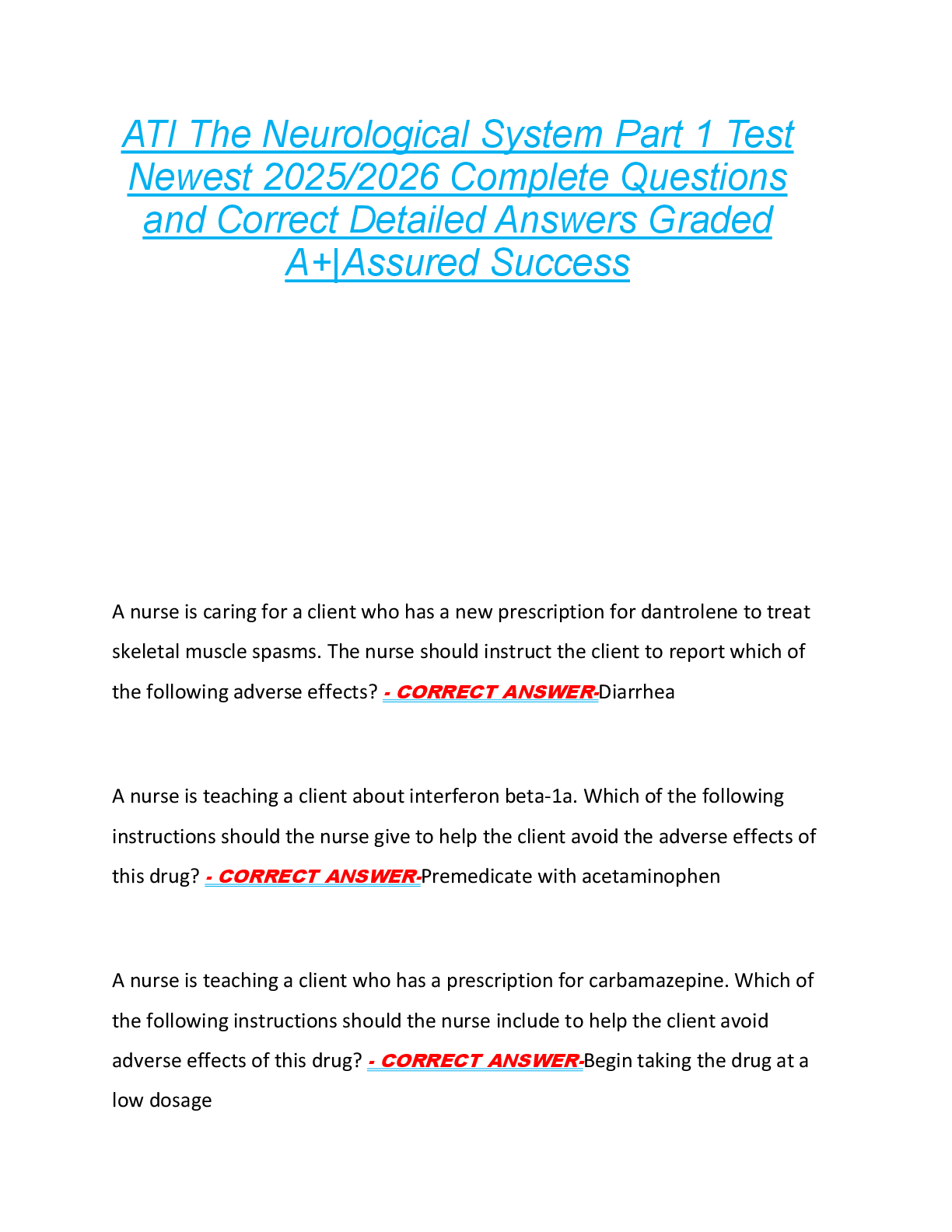Nursing Pathophysiology Final Exam Questions & Answers
Document Content and Description Below
Nursing Pathophysiology Final Exam Questions & Answers-While viewing the electrocardiogram, the nurse recalls the _____ conducts action potentials down the atrioventricular septum. - Bundle of His ... Which of the following patient would be most prone to metabolic acidosis? A patient with: - Diabetes whose glucoses are uncontrolled A 76-year-old patient had the following arterial blood gas sample after his stomach surgery in which his gastric content and fluid were removed: pH 7.55, PCO2 50, HCO3 35. What acidbase imbalance is most likely in this patient? - Metabolic alkalosis, compensating A 50-year-old male visits the cardiologist for an EKG. Results indicate that he has no PR interval and a variable QRS rate with rhythm irregularity. Which of the following is the most likely diagnosis to be recorded on the chart? - Atrial fibrillation A 65-year-old male is transported to the ER for chest pain. An electrocardiogram reveals a prolonged QRS interval. What is the nurse monitoring when the nurse observes the QRS complex on the electrocardiogram? The QRS complex reflects: - Ventricular activity Which is one of the acid/base conditions that would cause the nurse to monitor for hyperkalemia? - metabolic acidosis A 20-year-old male is in acute pain with restlessness and anxiety. An arterial blood gas reveals decreased carbon dioxide (CO2) levels. Which of the following does the nurse suspect is the most likely cause? - hyperventilation A 24-year-old female presents with excessive menstrual bleeding. The physician identified endometrial changes that are due to hormonal imbalances. These cellular changes would be referred to as: - Pathologic hyperplasia A 34-year-old was diagnosed with malignant tumor (cancer). The nurse teaches the patient about malignant cells. Which of the following is most appropriate explanation when describing malignant cells? - Malignant cells are dysplastic cells and are irreversible A characteristic of a malignant tumor includes that it: - can spread far from the tissue of origin A 25-year-old male develops cancer of the breast glandular tissue. What type of cancer does he have? - adenocarcinoma When planning care for a cardiac patient, the nurse knows that in response to an increased workload, cardiac myocardial cells will: - Increase in size The term apoptosis is appropriately defined as: - programmed cell death A report comes back indicating that muscular atrophy has occurred. A nurse recalls that muscular atrophy involves a decrease in muscle cell - size A nursing student is studying about cancer and the associated risks for cancer. The instructor knows the student understands cancer when which of the following are associated risks for cancer? - -Epstein-Barr virus (EBV) -hepatitis C virus (HCV) -hepatitis B virus (HBV) -human papillomavirus (HPV) A primary care provider is attempting to diagnose cancer and is looking for a tumor marker. Which of the following could be a possible marker? - Enzymes A 30-year-old homeless was seen in the emergency room with productive cough of bloodtinged sputum. His chest x-ray showed granulomatous disease. Upon further questioning, he was found to have had tuberculosis (TB) in distant past. TB infections are likely to result in which of the following forms of necrosis? - caseous When discussing body fluid, it is correct to state that: - Two-thirds of the body's water is intracellular. Rationale: One-third is extracellular. There are two components of the extracellular compartment: interstitial and intravascular. Total body water is about 60% of body weight. Which of the following statements is TRUE? When discussing body fluid movement, it is correct to state that: A) Potassium is the most abundant extracellular fluid (ECF) ion. B) Sodium maintains the osmotic balance of the intracellular fluid (ICF) space. C) Water moves freely across membranes. D) Aquaporins block water movement across the membrane. - C) Water moves freely across the capillary or cell membrane. Rationale: Aquaporins are a family of water channel proteins that provide permeability to water at the capillary membrane. Sodium is the major ECF cation, and potassium is the major ICF cation; this is due to the sodium-potassium pump. When discussing aldosterone, it is correct to state that: - It is a hormone that is secreted when sodium levels are depressed. [Show More]
Last updated: 8 months ago
Preview 1 out of 19 pages
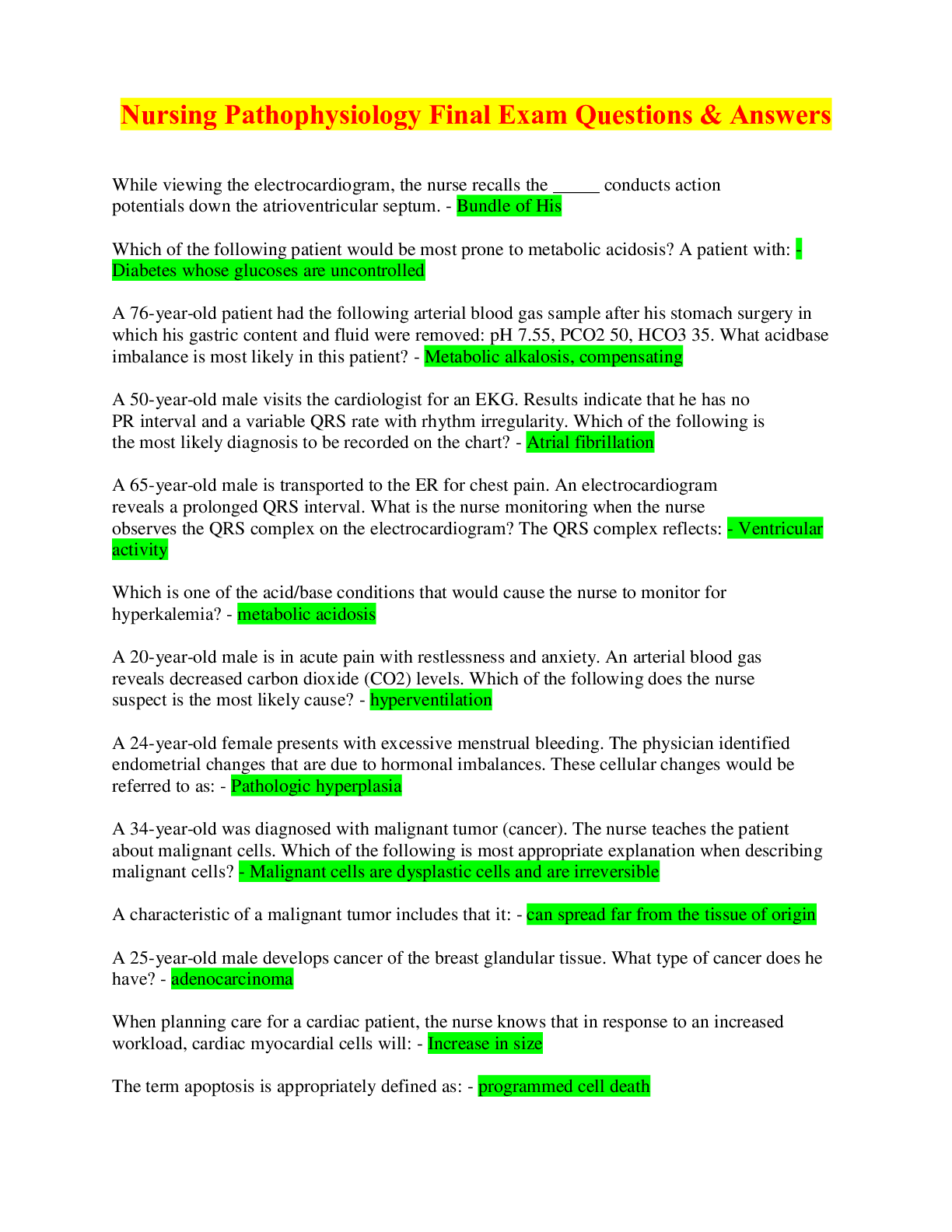
Buy this document to get the full access instantly
Instant Download Access after purchase
Buy NowInstant download
We Accept:

Also available in bundle (1)
Click Below to Access Bundle(s)

COMPREHENSIVE NURSING NURSE-UN24 | Patho Exam 1,2,3,4 & FINAL EXAMS Questions & Answers Bundle (Everything you need including study guides)
COMPREHENSIVE NURSING NURSE-UN24 | Patho Exam 1,2,3,4 & FINAL EXAMS Questions & Answers Bundle (Everything you need including study guides)
By PROF 2 years ago
$45.5
8
Reviews( 0 )
$14.50
Can't find what you want? Try our AI powered Search
Document information
Connected school, study & course
About the document
Uploaded On
Mar 06, 2023
Number of pages
19
Written in
All
Additional information
This document has been written for:
Uploaded
Mar 06, 2023
Downloads
0
Views
189

